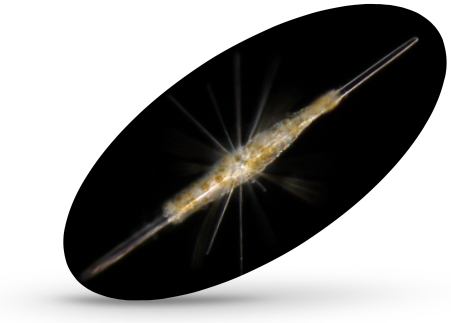Described a few years ago, the symbiosis between two marine planktonic organisms, the Acantharia (host) and a microalga called
Phaeocystis, is ubiquitous in the oceans. Thanks to subcellular imaging technologies, partially developed in Grenoble, researchers from the Helmholtz Center for Environmental Research (UFZ), UGA, CNRS and CEA, in collaboration with the ESRF, have unveiled key mechanisms showing that this unique form of symbiosis is essentially beneficial for the host (Acantharia).
 An Acantharia (host) 100-200 μm long with its intracellular symbiotic microalgae (10 to 100 copies) of 5-10 μm (yellow cells).
Credit: Johan Decelle
An Acantharia (host) 100-200 μm long with its intracellular symbiotic microalgae (10 to 100 copies) of 5-10 μm (yellow cells).
Credit: Johan Decelle
According to this interdisciplinary consortium, the cellular architecture and metabolism of the microalga
Phaeocystis are greatly modified by the host toward high photosynthetic productivity. This new mode of symbiosis is very likely a strategy of "farming" algae by host cells rather than a win-win relationship between the two species over evolutionary terms.